Oddfellows Hall, Black Street, Martham
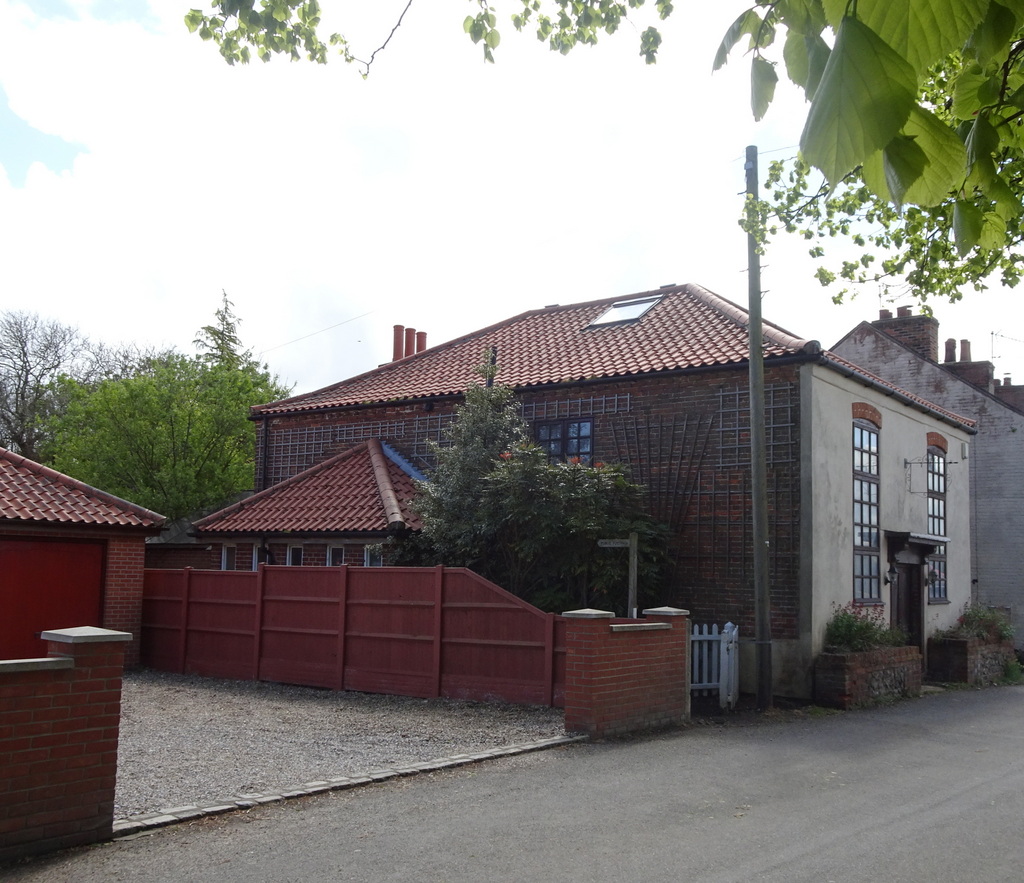
The Oddfellows is a friendly society founded in Manchester in 1810. They were set up to protect and care for their members and communities at a time when there was no welfare state or National Health Service. The aim was, and still is, to provide help to members and communities when they need it. The societies are non-profit mutual organisations owned by their members. All income is passed back to the members in the form of services and benefits. During the late 19th and early 20th centuries they typically provided mortgages to local people and insurance against fire risks.
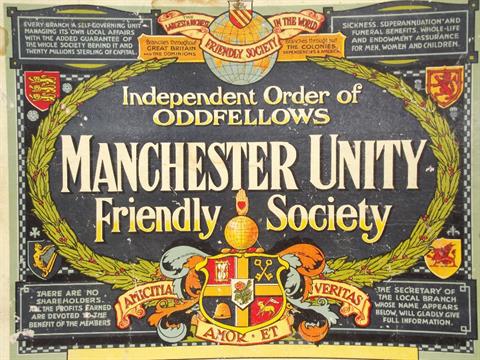
Each branch is called a Lodge. The Martham Lodge was established in May 1859 at the King’s Arms, Martham, where it continued to meet until around 1900. It was part of the Society’s Norwich District which at that time comprised of 58 Lodges with 15,500 members. The Norwich District was part of the national Independent Order of Oddfellows Manchester Unity Friendly Society Limited. The Martham Lodge was also called the Loyal ‘Rising’ Lodge No4780 of the Manchester Unity of the Independent Order of Oddfellows.
It was common practice in many rural Lodges to “adopt” a patron as their title. In Martham that was the Rising family who were the largest landowning family in the area when the society was set up. Aside from the normal benefits of membership, the Society also often conferred honorary membership on local worthies (Lord of the Manor, vicar or landowner etc); these Honorary Members would make an annual contribution to the Benevolence Fund of the Lodge but would not be eligible, nor need, to claim benefits. This was not totally altruistic as encouraging the working population to contribute together for their own maintenance and support in times of need resulted in fewer individuals and families becoming a charge on the Poor Rates of the parish, which landowners were obliged to pay.
In the early days virtually every Lodge met in a public house, where a meeting room would be provided free of charge, on the understanding that members would “take something for the good of the house”, i.e. buy plenty of beer, which most were very happy to do. This was commonly termed as paying a “Wet Rent”. By the end of the 19th century the Rising Lodge had 200 members, all of whom would have had to call at the pub to pay their contributions and claim benefits, therefore business for the landlord on meeting nights would have been very good indeed. We get confirmation of the establishment of the Lodge, the Rising patrons and public house meetings from the article below that appeared in the Norwich Mercury on 2nd February 1860.
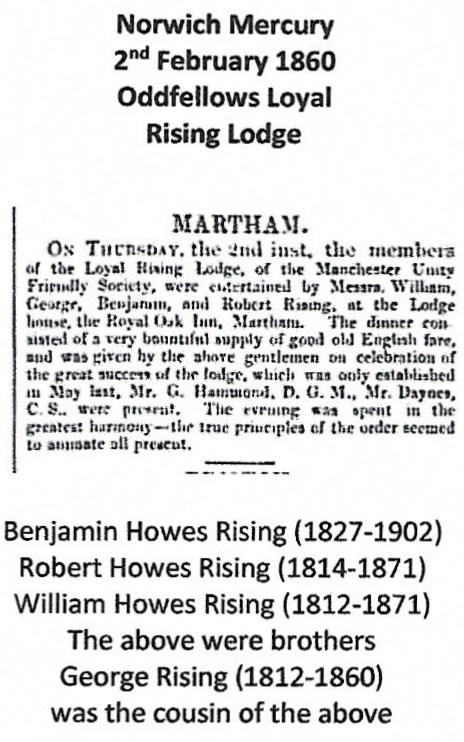
From the 1880’s onwards the Board of Directors of the Society were becoming increasingly concerned about meetings being held on licensed premises, which they thought, with all the drinking going on whilst business was being undertaken, was hardly appropriate for what had become such an august organisation. Lodges were therefore offered interest-free loans to build or purchase their own premises away from the temptations of the demon drink. The need to move meetings away from the public house was heightened in 1898 when the Society agreed to admit female members on the same terms as men.
At the same time as the Oddfellows was growing the Methodist movement was also gaining pace in the village. In 1801 the Vicar reported that Methodist preachers were causing much discontent in the village but by the time of the 1851 census 120 villagers declared themselves to be Methodists. The movement grew because they cared for ordinary country people and it was probably at about this time that they built their chapel on Black Street. By 1881 they had outgrown the building and opened their new, and existing, chapel on Repps Road. The former chapel was purchased by the Rev. Merriman and used as a church and public reading room for a while (at the time what we now know as the Church Hall was being used as the Vicar’s School and was not available to Rev Merriman). It is not clear when the Oddfellows took over the former chapel but it may have been after Rev. Merriman died in 1905. As they were being encouraged to leave the pub, by their Board of Directors, they may have rented the hall before actually purchasing it in 1930.
The Oddfellows had a large junior membership section called Juvenile Oddfellows. Every Lodge employed one or more doctors that were traditionally called Lodge Surgeons, although they acted like GPs. Prior to the National Health Service, Friendly Societies were the biggest employers of doctors in the UK. The Oddfellows Hall became a hub of activity with both young members and adults. This included a snooker table which fitted in so snugly that around one side of the table the cues were half the length of normal cues. Some local people can remember going to the hall in the 1960’s to play snooker and the removal of the table by the end of that decade.
The Rising Lodge continued to meet at its Oddfellows Hall, with membership in the 1970s still around 200, up until 1st January 1990 when a large reorganisation of the Society resulted in many of the smaller Lodges closing, including Martham, with administration being transferred to the Britannia Lodge in Great Yarmouth.
The Parish Council used the Hall for meetings for a short while before it closed. This photograph of the hall is dated to May 1993. By this time, it was little used, perhaps only as a Polling Station. Soon, the hall was no longer needed and after a long time on the market it was purchased by Mr Douglas and converted for residential use.
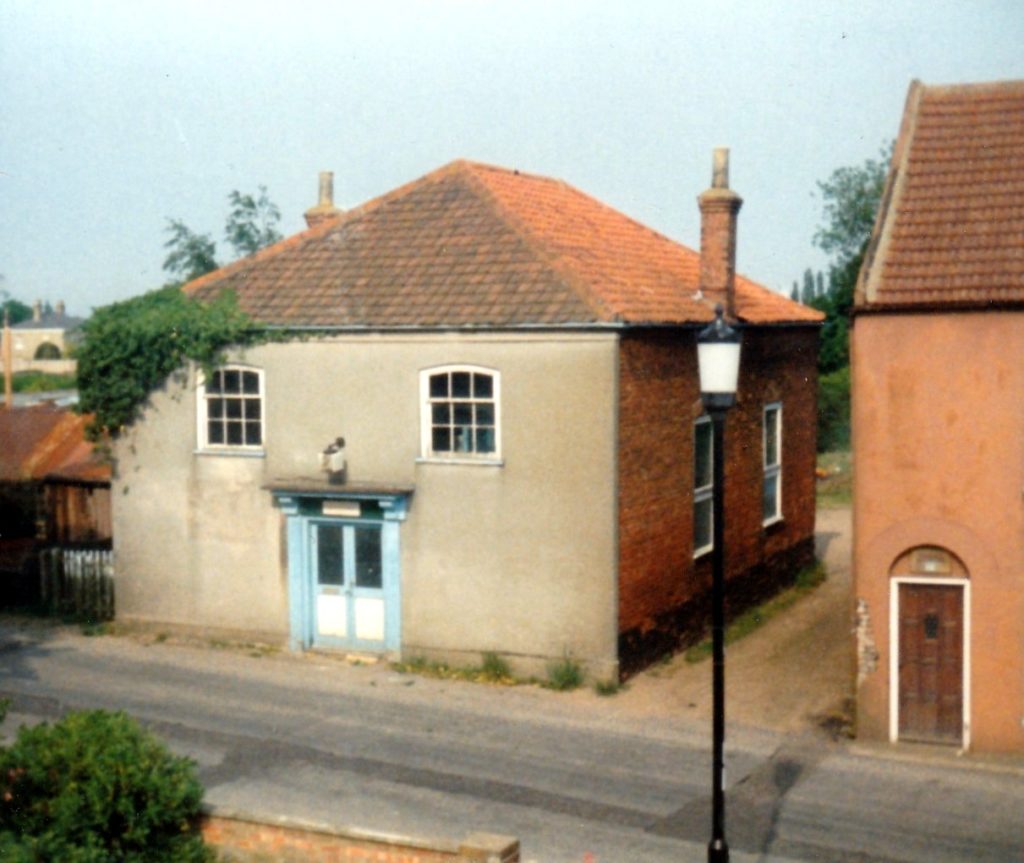
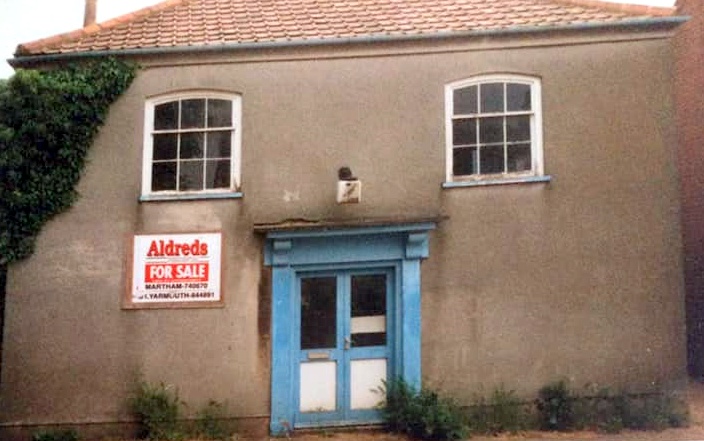
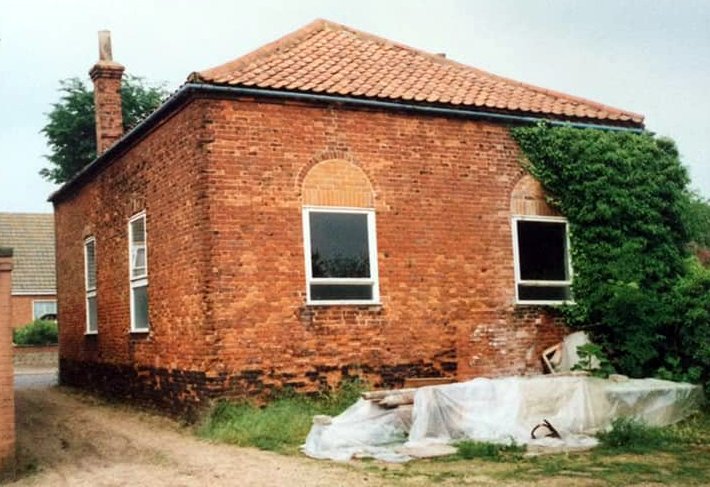
In Martham some of the Trustees of the Oddfellows were known to be:-
- Edgar John Mace (a farmer) from about 1928 to 25th Jan 1948.
- Anthony William Crisp (assistant surgeon to his father) from ? to at least 1928.
- John Larter (builder) from about 1928 to his death in 1951.
- Marshal William Alcock (grocer of Norwich House) from ? until he retired on 14th December 1945.
- Alfred George Ribbands from 14th December 1945 to 17th February 1966.
- Albert Alfred Francis from ? until his death on 3rd November 1958.
- William Edgar Tungate (a thatcher from Damgate) from 1948 to 1959.
- Charles Sydney Myhill from 5th December 1958 to ?
In 1893 the Chairman was Alfred Mabbott Wiseman of Martham House. Daniel Rust Jnr. was the Secretary for about 40 years until he died in 1920. From at least 1939 to 1959 Olive Rigg was the secretary to the Order, she lived in Black Street. She was followed by George Cooke who was the secretary from 1960 until his death in 1990.

Manchester Unity of Oddfellows was the largest friendly society in the world with over 4,000 branches (Lodges) and three million members in the UK plus branches across the British Empire, providing unemployment, sickness and death benefits, widows and orphans pensions, convalescence and medical treatment for members and their dependants. It was the forerunner of, and laid the blueprint for, the Welfare State. It was also all that stood between most people and the prospect of the Workhouse.
From 1912 until 1948 the Oddfellows was an Approved Society, administering National Insurance contributions and benefits (introduced by Lloyd George) on behalf of the State alongside its voluntary benefits role. With the establishment of the Welfare State in 1948 that role was taken over (along with many of its staff) by the newly formed Ministry of Pensions & National Insurance.
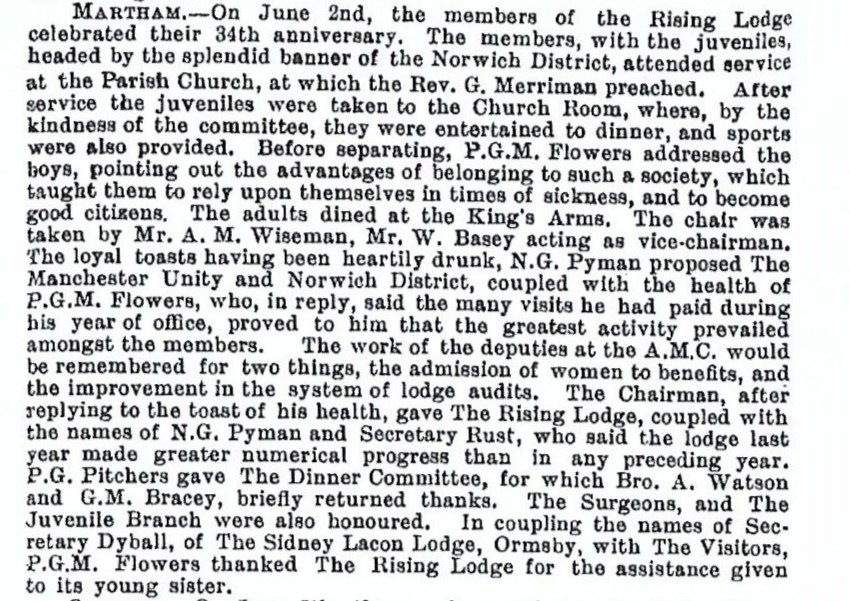


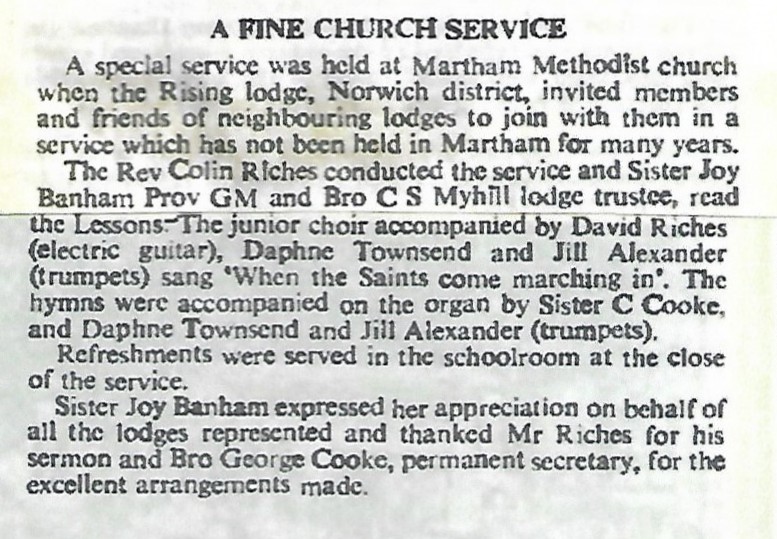
My thanks to the following who have greatly helped me with the above information:-
Janet Edwards – Her paper ‘The Loyal Rising Lodge of Oddfellows, Martham 1859-1990’.
Paul Eyre of the Oddfellows, Manchester.
Ann Meakin – President of Martham History Group.